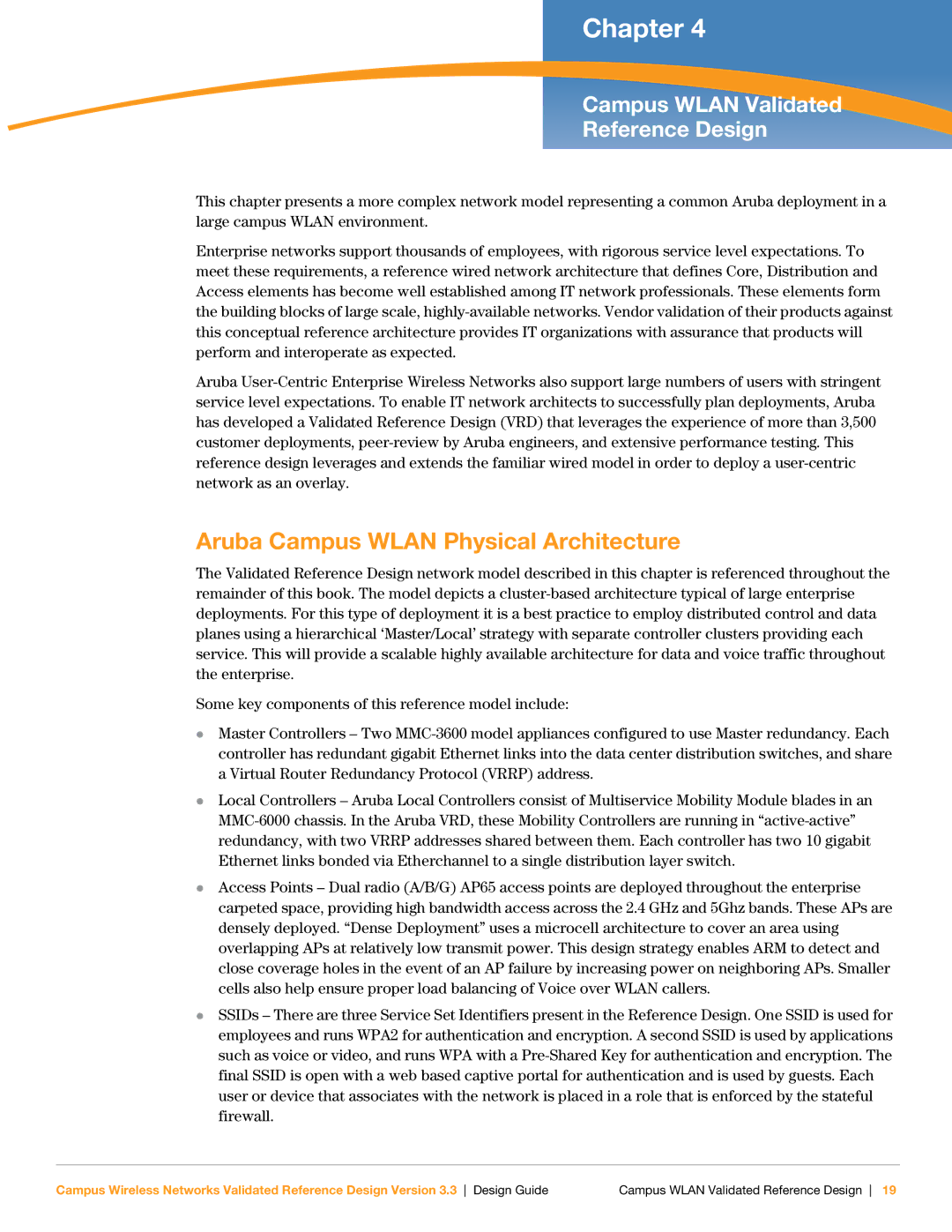
Chapter 4
Campus WLAN Validated
Reference Design
This chapter presents a more complex network model representing a common Aruba deployment in a large campus WLAN environment.
Enterprise networks support thousands of employees, with rigorous service level expectations. To meet these requirements, a reference wired network architecture that defines Core, Distribution and Access elements has become well established among IT network professionals. These elements form the building blocks of large scale,
Aruba
Aruba Campus WLAN Physical Architecture
The Validated Reference Design network model described in this chapter is referenced throughout the remainder of this book. The model depicts a
Some key components of this reference model include:
zMaster Controllers – Two
zLocal Controllers – Aruba Local Controllers consist of Multiservice Mobility Module blades in an
zAccess Points – Dual radio (A/B/G) AP65 access points are deployed throughout the enterprise carpeted space, providing high bandwidth access across the 2.4 GHz and 5Ghz bands. These APs are densely deployed. “Dense Deployment” uses a microcell architecture to cover an area using overlapping APs at relatively low transmit power. This design strategy enables ARM to detect and close coverage holes in the event of an AP failure by increasing power on neighboring APs. Smaller cells also help ensure proper load balancing of Voice over WLAN callers.
zSSIDs – There are three Service Set Identifiers present in the Reference Design. One SSID is used for employees and runs WPA2 for authentication and encryption. A second SSID is used by applications such as voice or video, and runs WPA with a
Campus Wireless Networks Validated Reference Design Version 3.3 Design Guide | Campus WLAN Validated Reference Design 19 |
